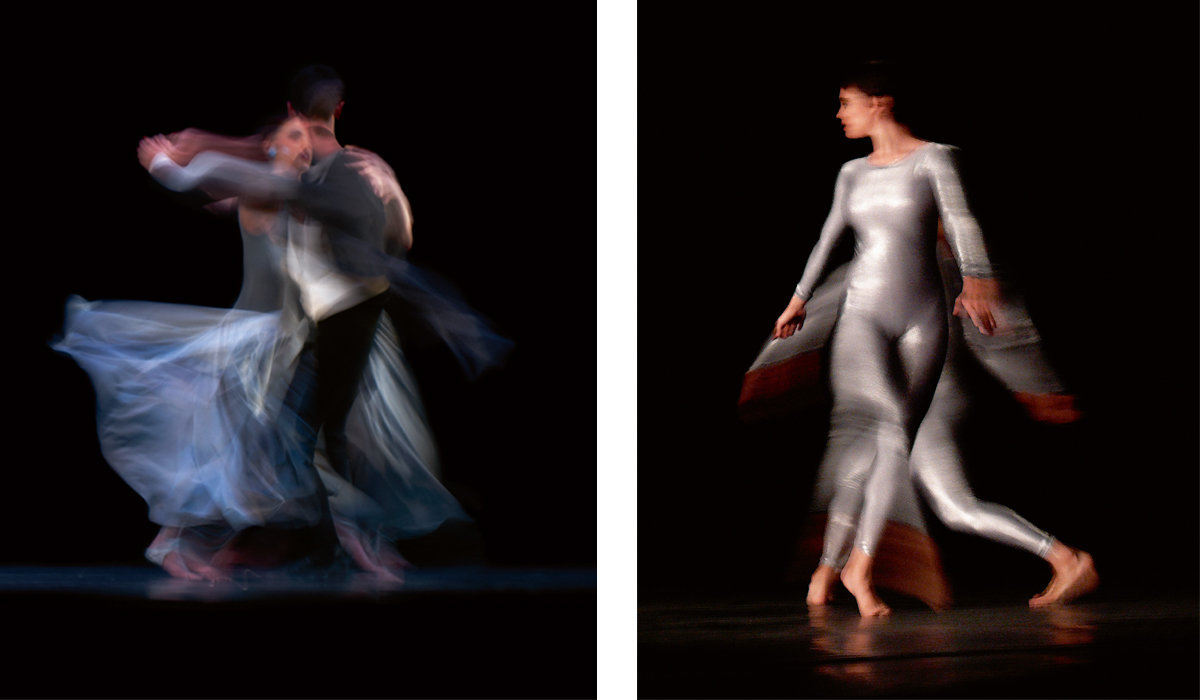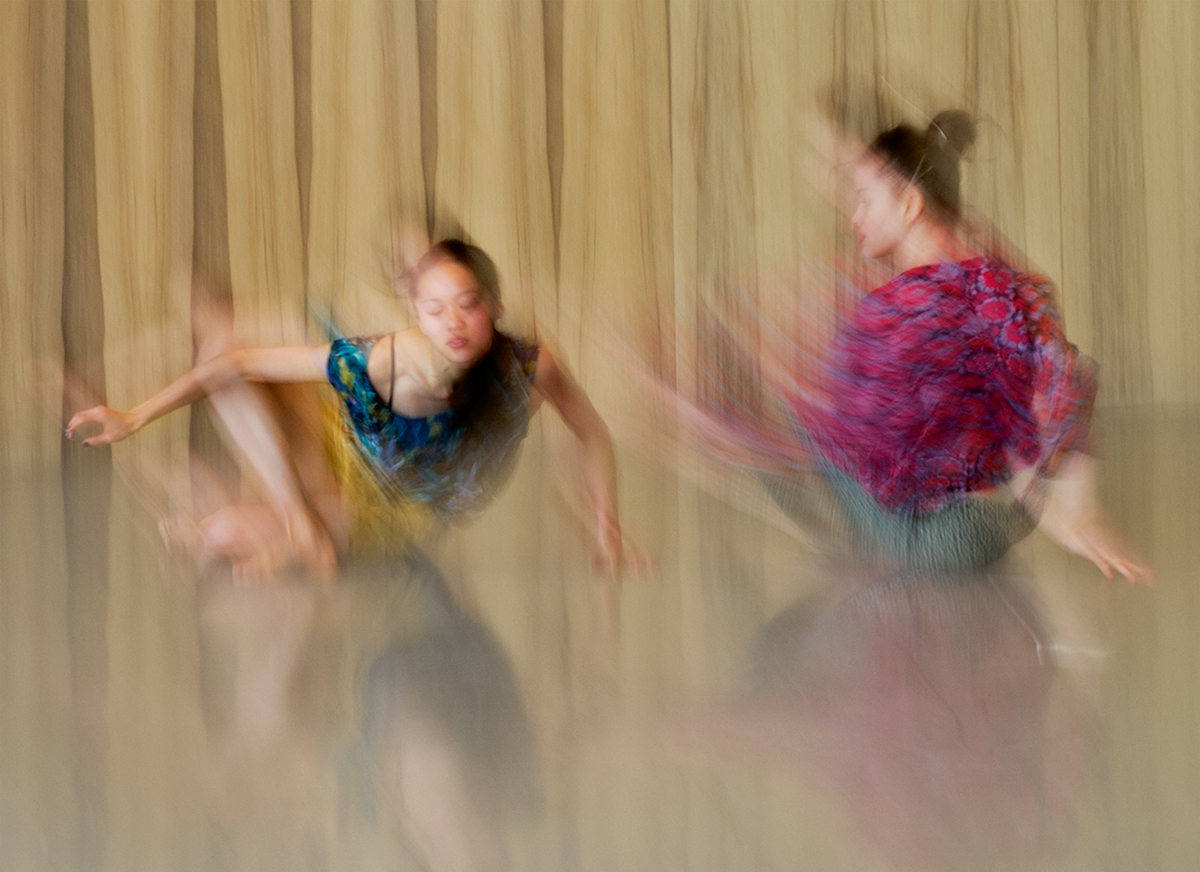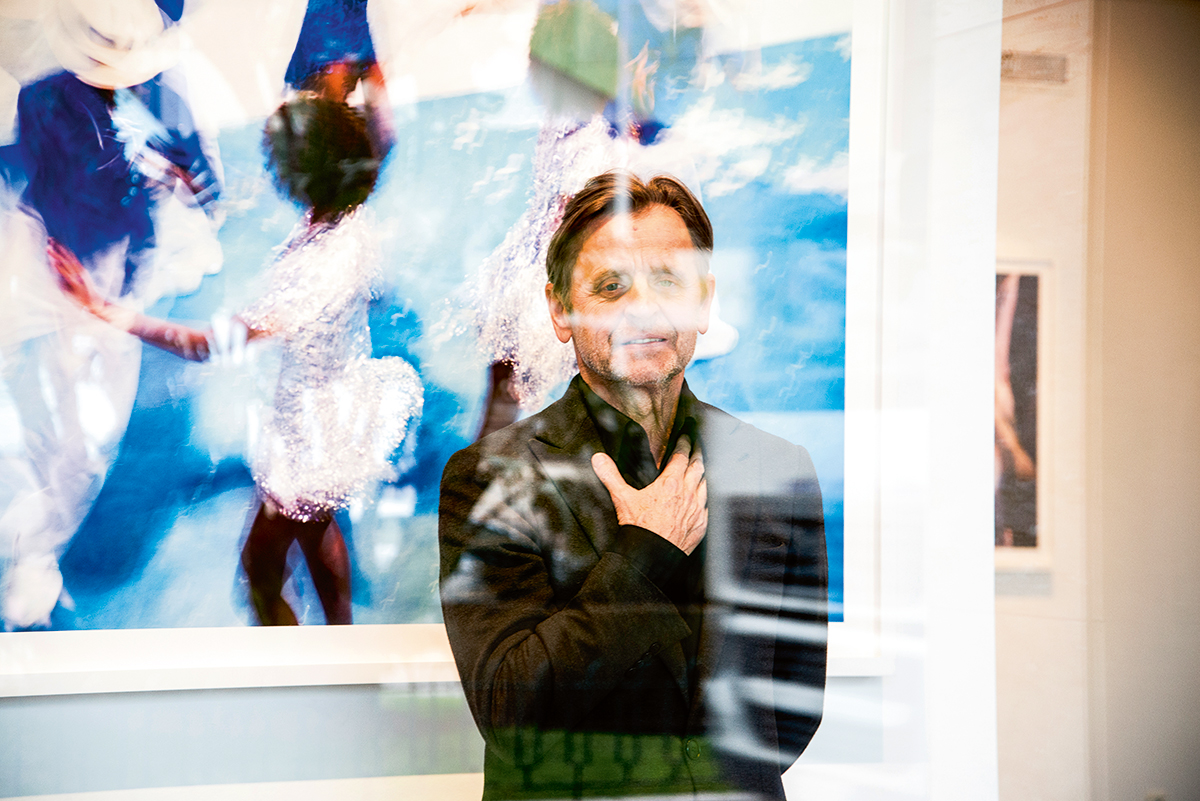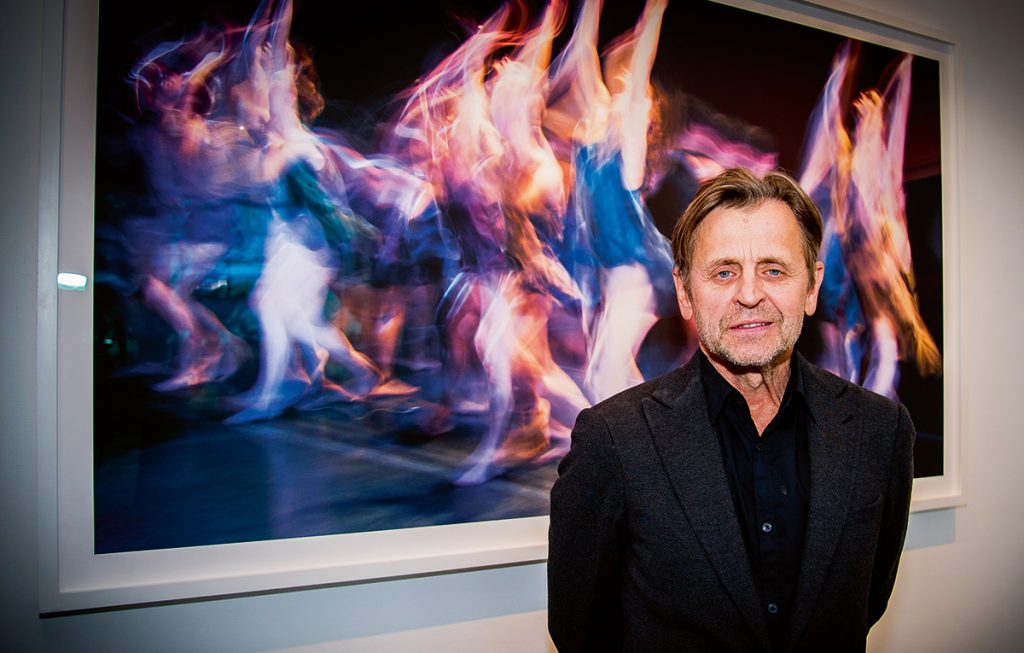My heart is in my stomach… I will soon be meeting a man who has been performing before the public since he was 9 years old. You think of all the things that you think you know about him and what you have heard that others know about him.
Clive Barnes, NY dance critic, recognizes him as the “most perfect dancer that he has ever seen”… You know that he has trained with Mr. B (George Balanchine of New York City Ballet); he has run his own company (ABT – American Ballet Theater) for a decade… His version of the Nutcracker was nominated for two Emmy awards …As an actor, he was nominated for an Oscar for his role in The Turning Point … Choreographers the world over have created roles for him and he has danced on stages around the globe… You have read of his stage work in various plays and especially works by avant-garde authors and directors. ..You have found out that the project closest to his heart is the arts center that carries his name (BAC – The Baryshnikov Arts Center), which this year will be celebrating 10 years. BAC is a crossroads for artists of varying disciplines, serving as a creative laboratory and performance space.
Then you see him… calm, down-to-earth, he speaks about his photography. His eyes light up and they call to mind the camera… a flash of passion for his work that is quite contagious, not because of his words, but because of what you see. Having played with the camera for over 40 years, the dancer had no desire to duplicate the static images of crystalline dancers’ bodies, but preferred capturing the energy and the movement… using blurring and amorphous techniques. The results is stunning, and provides a surprising moment for us, the voyeurs, as we get a private glimpse of the camera’s eye on movement!
It is a rare occasion indeed that an extraordinary person crosses your path, and you always hope that in your lifetime, this will occur. FORCE ONE Magazine had this opportunity a couple of weeks ago, when we met, today, the most famous dancer in the world. … And this dancer shares with us his take on putting the camera’s eye on dancers. Movement personified, an extremely generous and honest Mikhail Baryshnikov shows us his world.
EYES WIDE OPEN
F.1.M. : Your exhibition has garnered important raves in London …
M.B. : Yes, London was one of my many exhibitions. Before I was in Venice, in Italy and Cortina, and you know I exhibited in NY and elsewhere, in Russia. This is the first time actually in MC and …as for dancers, it is a historic place, of course, and the people here especially have their own company, and they follow dance, and of course in France in general, the cradle of classical dance. It is a pleasure and exciting to show a little part of a selection of images. In London, it was practical 40 pieces, and the people here in Monaco sort of suggested certain things and I gave them carte blanche to choose. As you see, it is a lovely space, bright lighting.
F.1.M. : You have titled the exhibition “Dancing Away” and we can obviously see the reason why. But those are our thoughts, what are yours?
M.B. : Dancing Away is a kind of dichotomy of the essence … you can interpret it in many different ways, you know: Dancing Away, you could say dancing away all night; or away from some things, looking back, there are many meanings to it, that’s why I decided to use it: it is a kind of a ‘je ne sais pas’…
F.1.M. : Oscar Wilde said that “the personality of an artist is not a thing the public should know anything about. It is too accidental….”1 Is your life accidental?
M.B. : Well it is in fact. I think. You know Joseph Brodsky said that “the most tender voice is so sweet that it disappears in the wings;” which means that you don’t have to know what type of spaghetti sauce an artist would eat at an evening meal…and yet we live in the 21st Century where everyone would like to get under the skin of the creator or participant, which I understand. However, the creative process is another element of this question, and I respectfully disagree with the Grand Maître, although there is a lot of truth in it.

F.1.M. : Another thing that the great writer said was that “the aim of art is art.” Do you have a definition for art? Who defines it?
M.B. : You know, I am not an art critic and I always like that in expression…somebody said that “real art is a little little…something that is off…whether it is music, a painting, a sculptor, literature or a poem…and that is slightly off balance, slightly not finished, slightly almost in the process, which attracts others.
You know, for me, it was the quest for that moment in whatever I do, be it on stage as an actor, a TV appearance, a movie, or a dance…there is something where I put myself right in front of the abyss in a way which is kind of slightly as described in a beautiful poem by Joseph Brodsky in that “life can suddenly move to your left, and then return again to move to the right.” A kind of internal move which is kind of discomfort, surprise and…
F.1.M. : Dangerous?
M.B. : Maybe that feeling, if you surprise yourself…If you know what you will do exactly, why do it? It’s like working a lot with Bob Wilson my second time and I will do a new play with him and he always keeps the very end for the very end! He goes and stretches the last decision until the very last day before the premiere and a lot of the people want to know, from the very beginning, the entire thing. He says ‘No, I want to surprise myself and everybody else…and gambling, I know what I want in the beginning, in the middle, but how it will manifest itself in the end, that’s somebody’s else’s answer.” And, I like that!
F.1.M. : Your first and most vivid supporter was your mother, but when you were 12, tragedy took her away. How did you provide yourself with the impulse to continue?
M.B. : Before she left me and my brother, I was already hooked by the theatre, dance.. I was already three years in dance school and performing. You know, children are very shrewd animals and they are survivors, you know. Especially at that age, 10 or 11, I knew exactly that I would be a dancer. I loved performing because I got that (here he makes a sound ‘hah, hah’ equaling the shot of adrenaline that he got while performing)…Of course, it was difficult because I missed my mother; I miss her now. I still remember her; she was an extraordinary woman, beautiful, loving, and I survived.
F.1.M. : You had a teacher who, not only taught you about dance, but also taught you about being a man in Alexandr Pushkin…
M.B. : Well up until the age of 16, I lived in Latvia and I had first a very powerful encounter with the Dance Theatre. I started performing when I was 9 years old, professionally dancing roles in the opera, ballets and theatre. When I arrived in Russia in Leningrad, today St. Petersburg, I was in my late teens and my desire was unchangeable. I got very lucky with this great teacher, Alexandr Pushkin who was Nureyev’s teacher, and he took me to his class. When I moved to Russia years later, I was accepted as a soloist in arguably the best company in the world.
F.1.M. : Is it still the best?
M.B. : You know I would definitely say the best dance school in the world; not because it is my alma mater, but stylistically it is the purest and the most profound school, in my view.
F.1.M. : How does the public’s appreciation of what you do, influence at all your creative impulse?
M.B. : What I do, I don’t do to please anybody. I do to satisfy my curiosity and see how far this curiosity takes me, because I like to learn. If it’s photography, I want to learn about its history, technical aspects and everything else, trying to find a way to be as original in my approach as I can. The same applies to the theatre, or my main job, my center in New York (BAC – Baryshnikov Art Center), which is a totally socio- politically and culturally very different platform which covers the most important element in my life, besides family and kids. But they are all on the same plate and I don’t discriminate with any of this. You know, all my elements in arts, it’s like something selfish and the directorship in my center is almost a civil duty. I came back to New York and decided to do this for many different reasons. This year we will be celebrating our ten years anniversary.
F.1.M. : And you will be dancing?
M.B. : No, I really don’t perform dance anymore. I perform right now with the works of Bob Wilson when it calls for movement. But I do not do any solo or concert work. When you consider my age, it would be ridiculous to do a serious dance show. I am not a flamenco, kabuki artist or tango artist who can perform until they are in their 80s and 90s! The roles that I do in the theatre are all movements because that’s what directors want from me. And their desires coincide with mine because I am interested in contemporary and avant-garde theatre, which is very eclectic…
I started to work in the theatre in the 80s and did Kafta’s Metamorphous which Roman Polansky had done. It was he who pushed me on stage in fact, because I saw him in Paris. Throughout the years I did Beckett, Chekov, a Russian company in Paris, Gabritia Sky. A couple of years ago I did The Old Woman with William Defoe, the Letters to the Man, based on the diary of Vaclav Nijinsky that he wrote while in an Russian asylum. The play will be performed this summer in Spoletto, Italy. The most difficult, of course, is to get your calendar in sync so as not to overlook the work that you have to do.

F.1.M. : One of your photos, shows the energy of the young dancers and we are actually dancing with the images and energy in the photo…
M.B. : This photo is very recent from August when I was in Brazil. I always go to see the samba schools, during the rehearsals for the carnival. And this particular group were competing to represent their school at the Carnival. I went at night and it was wonderful to photograph this great bunch of dancers. The composition was a bit like Matisse; the colors, the circles, you don’t see their faces, but you see something about Brazil, they’re hot.
F.1.M. : Most of our readers are not photographers, so could you explain something about the technique of getting this type of texture?
M.B. : Forty years ago I started photographing with a normal 35mm camera, taking portraits, landscapes, family, the children and love ones, and I had a certain success, albeit modest. Then when the digital camera came on the scene, I started experimenting with movement. We have a house in the Dominican Republic and I loved shooting the people…always dancing with the music – the merengue or the bachata; the rhumba dances. I found this so interesting and started photographing this and you just have to find your way. Light is changing all the time and you have to figure out what the aperture should be; dragging, delaying and shutter … with digital photography it’s pretty slow anyway because you’re dealing with colors…and there are many surprises. In this particular photo, I did not manipulate at all the colors…the silver dresses and the blue…I just cropped it, framed it, knowing that it would be horizontal.
I started to look into the history of that kind of work and I discovered the extraordinary people working in this field (Brodovitch of Harper’s Bazaar; Dick Avedon, Irving Penn, and others, Paul Himmel, Elsa Dean, among others).With Digital equipment you see exactly what you will get, you can change. You never get exactly what you want, but you know the direction. Today, photographing is immediate. Choo, choo, choo, paf!
F.1.M. : You have often used the phrase “selling my life.”
M.B. : Did I? I have said some stupid things!
F.1.M. : In terms of that, If you were to move to Monaco, one question would be what is your profession. What would you write?
M.B. : You know, it’s funny I just test sometimes people when I come back home. When they ask me what’s my profession, and if I have done some theatre, I usually put down ‘actor.’ Sometimes I put ‘photographer,’ they don’t care. It’s like … I don’t know. It’s that I don’t like to be called an ‘artist.’ Such pressure! If you say (and here he takes on a pompous voice) ‘I’m an artist!’ It’s like your saying that you are more sensitive or talented than others. I am privileged to practice art and … we all walk on the same pavement. Some get a bit more lucky and those who are not quite so lucky, there is always room to come up.
In this sense, people who put themselves above, that’s wrong. It’s wrong for the arts, their work. People who are really serious creators, in all disciplines, I have met most of them and 90% are very simple and humble people. I really believe that they are very demanding of themselves; they judge themselves harshly. But I rarely hear them put somebody down or be vulgar. Real creators are very generous and want to be vulnerable; for the next project, they have to be here. Desiring something fresh, with open eyes and an open heart to create something important and personal.
F.1.M. : You just said something that I wanted to give as a title to this conversation. I was looking at your portrait photo and contrary to Kubrick’s eyes wide shut, your eyes are wide open! It is however very hard for people to see what is behind those eyes.
M.B. : You have to also protect your privacy. For instance, when you hear the phrase ‘selling yourself,’ or this and that, it means you are not necessarily always doing what you want to do. It’s a part of the so-called business, not really business, but a necessity that your work will reach the most people; and not necessarily enjoy sometimes. This includes interviews where you are cornered by people with unpleasant questions or ones that I don’t want to answer. But I guess it is a routine and you have to be a soldier because of the other people involved; it’s not just you. Here, it is me and my work. But there are people in the gallery, people who are arranging this vernissage, those who helped me to print all these pieces, and I am sacrificing my other projects to be here to promote this. There are a lot of pros and cons … laws of the jungle, so to speak.

F.1.M. : You have done some acting and I have heard it said that you are uncomfortable in this field.
M.B. : Well, I hope I am getting better. I started suddenly to perform, you know, as I didn’t have any traditional acting studies. In our dance school, acting is a part of the curriculum, but of course, for dance… Whether I am on stage as a dancer or on stage as an actor, my instincts are pretty much the same. It’s a long story as to how it works, and sometimes, I don’t even comprehend. I know that the bridge is not very solid, but it’s there because I am using my instincts as a dancer, and this is the bone of my performance while acting in a play…When you do something you didn’t train to do, it’s a challenge; I have to work longer hours than the others, working on my diction, breathing…and working with my coaches, directors and advisors, I love it!
F.1.M. : Last question, when you were a dancer back in Russia, there was always in the rehearsal room a mirror and you were facing yourself…
M.B. : A lot of people do not understand why this mirror exists. The biggest mistake dancers make is to fall in love with certain images. The mirror exists to track down, not the prettiest image of yourself, but to show you what you don’t like about yourself. Because, if you totally fall in love with your persona or your body, you will totally dismiss the negative and what’s wrong with the image.
That’s why a lot of choreographers close the curtain. And a lot of people proclaim ‘no, no, no, I want to see myself.’
In the theatre, there is no mirror and you have to truly be real to understand that, one day, this mirror will no longer be there. You have to control yourself and really understand your visuals, your heart, your instinct and your knowledge of your body and how your craft really works, and not to follow that “umm, I look good, that’s nice…” This is a self-congratulatory element which is not good for a dancer.
F.1.M. : (The interviewer, with a trembling voice and almost in a whisper²)…Usually Force One Magazine closes the conversation, but this is your window and we would like you to say to our readers just whatsoever you desire.
M.B. : Yes, I am very happy to be here again. You know, it’s a place that has a very important history in dance. I worked here years ago with Margot Fonteyn when she was doing a series about dance for the BBC. Especially about the Ballets Russes and we did the Spectre de la Rose and a small section of Petroucka in the Salle Garnier.
I knew Princess Grace quite well and she visited rehearsals a lot, with Princess Caroline, and Princess Stephanie who was often with her looking at the filming. Those were very touching moments for me; she was an extraordinary lady. And of course, Prince Rainier was absolutely fabulous. This time, I had the opportunity to meet Jean-Christophe Maillot and see the Atelier, home of the Ballets de Monte-Carlo and visit the Casa Mia with Luca Marsala, the person in charge of school curriculum and dance training for the young dancers, who are so impressive.
F.1.M. : Mr. Baryshnikov, you have so touched us with your words, and I know that Monaco will be more touched with your photos.
1. St. Jame’s Gazette, 18 January 1895
2. The interviewer, wiping tears, was deeply touched as she realized that MB’s words pierced the urge of every one of us searching the mirrors of the world for the perfect image of ourselves…A cosmic revelation if there ever was one!

